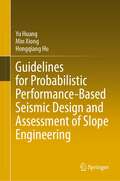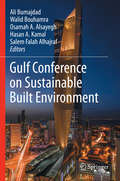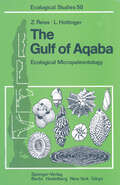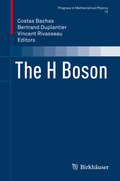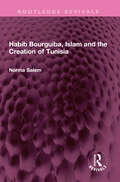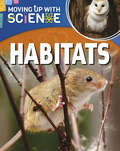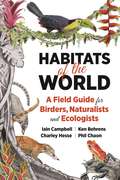- Table View
- List View
Guidelines for Probabilistic Performance-Based Seismic Design and Assessment of Slope Engineering
by Yu Huang Min Xiong Hongqiang HuThis book provides a new design and evaluation framework based on slope Stochastic Dynamics theory to probabilistic seismic performance for slope engineering. For the seismic dynamic stability safety of slope, it shifts from deterministic seismic dynamic analysis to quantitative analysis based on nonlinear stochastic dynamics, that is, from qualitative to the description of stochasticity of earthquake excitation that meet the needs in related design specification and establish a performance standard. In the nonlinear dynamic time history analysis of slope subjected to seismic ground motion, the term “randomness” is used to express the uncertainty in the intensity and frequency of earthquake excitation for slope engineering dynamic seismic performance. It mainly includes seismic design fortification standard, corresponding ground motion excitation, performance index threshold, and slope deterministic nonlinear seismic dynamic response. Even more than that, the seismic dynamic large deformation approaches of the whole process and comprehensive analysis for flow analysis after slope instability failure. Eventually, the probabilistic seismic dynamic performance of the slope engineering will be characterized by nonlinear dynamic reliability.
Gulf Conference on Sustainable Built Environment
by Ali Bumajdad Walid Bouhamra Osamah A. Alsayegh Hasan A. Kamal Salem Falah AlhajrafThis volume brings together outstanding contributions to the Gulf Conference on Sustainable Built Environment, held at the Marina Hotel Kuwait, near Kuwait City. The Proceedings collects 29 papers on a range of engineering and materials challenges, and best practices, addressing development of new sustainable building materials, performance improvement of structures and tall buildings, developing monitoring and analysis techniques and frameworks for existing infrastructure under environmental effects, development of long-term sustainability plans for building stock, and development of energy efficient buildings in the gulf region. The Conference was organized by the Kuwait Foundation for the Advancement of Sciences (KFAS), the Massachusetts Institute of Technology, the Kuwait Institute for Scientific Research, and Kuwait University.
The Gulf of Aqaba: Ecological Micropaleontology (Ecological Studies #50)
by Zeev Reiss Lukas HottingerThe reconstruction of ancient marine environments is an important task of the Earth Sciences, of great interest to geology, pure and applied, to oceanography and climatology, as well as to such fields as ecology and evolution. In principle, such reconstructions are based on the actualistic approach of "the present is the key to the past." Since the deciphering of past environmental changes, either nat ural or man-made, has considerable bearing on planning, the past may provide a key to the future. Paleoenvironmental interpretations in the marine realm are based to a great extent on assemblages of fossils recovered from ancient sediments in outcrops and from land-based or submarine drillings. Observable lateral sequences of assemblages in contemporaneous strata, the known or assumed functional or adaptive significance of preserved skeletal struc tures, as well as their evolution through time and space, provide by themselves indications of ancient environmental settings. In some cases even present-day eco logical considerations may be derived from analysis of fossils.
Gully Erosion Studies from India and Surrounding Regions (Advances in Science, Technology & Innovation)
by Pravat Kumar Shit Hamid Reza Pourghasemi Gouri Sankar BhuniaThis book offers the scientific basis for the ample evaluation of badland management in India and some surrounding regions. It examines the processes operating in the headwaters and main channels of ephemeral rivers in lateritic environments of India. In particular, the book covers a range of vital topics in the areas of gully erosion and water to soil erosion at lateritic uplands regions of India and other regions in Asia. It explores the probable gully erosion modeling through Remote Sensing & GIS Techniques. It is divided into three units. Unit I deals with the introduction of badland, types of badland and the process of badland formation. Unit II is devoted to a description of quantitative measurements. Unit III deals with the control and management processes related to various issues from different regions. As such this book serves as a reference book for research activities in this area. It is an efficient guide for aspiring researchers in applied geography, explaining advanced techniques to help students recognize both simple and complex concepts.
Guns, Germs And Steel: A Short History Of Everybody For The Lst 13,000 Years (Patterns Of Life Ser.)
by Jared Diamond'A book of big questions, and big answers' Yuval Noah Harari, bestselling author of SapiensWITH A NEW AFTERWORD FROM THE AUTHOR Why has human history unfolded so differently across the globe?In his Pulitzer Prize-winning book, Jared Diamond puts the case that geography and biogeography, not race, moulded the contrasting fates of Europeans, Asians, Native Americans, sub-Saharan Africans, and aboriginal Australians. An ambitious synthesis of history, biology, ecology and linguistics, Guns, Germs and Steel remains a ground-breaking and humane work of popular science.
Gyro-Free Inertial Navigation Technology (Navigation: Science and Technology #7)
by Hongjin Zhou Yunhai Zhong Hui Song Su WangThis book focuses on gyro-free inertial navigation technology, which is used to measure not only linear motion parameters but also angular rates. Since no gyroscopes are used, the key technologies, such as initial alignment, attitude resolution, and error calibration, are very different than those used in traditional methods.Discussing each key technology in gyro-free inertial navigation system (GFINS) manufacture in a separate chapter, the book features easy-to-understand, detailed illustrations, to allow all those involved in inertial navigation to gain a better grasp of GFINS manufacture, including accelerometer setting principles; initial alignment; quaternion-based, attitude resolution algorithms; and accelerometer de-noise methods.
H.A. Kramers Between Tradition and Revolution
by Max DresdenIt is now a little more than 11 years since the idea of writing a personal and scientific biography of H. A. Kramers took hold of me. A few days earlier I had been lecturing, in a course on field theory, on the renormalization proce dures of relativistic quantum field theory. Since the students had considerable trouble understanding the physical basis of the procedure, at the end of the lecture T explained that renormalization is not an exclusive quantum or relativistic procedure. A careful treatment of classical electron theory as started by Lorentz and developed in detail by Kramers also requires re normalization. The students appeared quite interested and I promised them that I would explain all this in more detail in the next lecture. I could have looked up this material in Kramers' book, but I remembered that Kramers had stressed this idea in a course I had attended in Leiden in 1938-1939. I did dig up some of these old notes and, although they were considerably less transparent than my recollection seemed to indicate, they reminded me force fully of the thrilling days I had spent in Leiden with Kramers. Kramers' deep insight and originality were apparent even when distorted by my opaque notes. The students had never heard of these ideas of Kramers' and were totally unaware of his work in field theory.
The H Boson (Progress in Mathematical Physics #72)
by Costas Bachas Bertrand Duplantier Vincent RivasseauThis volume provides a detailed description of the seminal theoretical construction in 1964, independently by Robert Brout and Francois Englert, and by Peter W. Higgs, of a mechanism for short-range fundamental interactions, now called the Brout-Englert-Higgs (BEH) mechanism. It accounts for the non-zero mass of elementary particles and predicts the existence of a new particle - an elementary massive scalar boson. In addition to this the book describes the experimental discovery of this fundamental missing element in the Standard Model of particle physics. The H Boson, also called the Higgs Boson, was produced and detected in the Large Hadron Collider (LHC) of CERN near Geneva by two large experimental collaborations, ATLAS and CMS, which announced its discovery on the 4th of July 2012.This new volume of the Poincaré Seminar Series, The H Boson, corresponds to the nineteenth seminar, held on November 29, 2014, at Institut Henri Poincaré in Paris.
The H-Function: Theory and Applications
by A.M. Mathai Ram Kishore Saxena Hans J. HauboldTheH-function or popularly known in the literature as Fox’sH-function has recently found applications in a large variety of problems connected with reaction, diffusion, reaction–diffusion, engineering and communication, fractional differ- tial and integral equations, many areas of theoretical physics, statistical distribution theory, etc. One of the standard books and most cited book on the topic is the 1978 book of Mathai and Saxena. Since then, the subject has grown a lot, mainly in the elds of applications. Due to popular demand, the authors were requested to - grade and bring out a revised edition of the 1978 book. It was decided to bring out a new book, mostly dealing with recent applications in statistical distributions, pa- way models, nonextensive statistical mechanics, astrophysics problems, fractional calculus, etc. and to make use of the expertise of Hans J. Haubold in astrophysics area also. It was decided to con ne the discussion toH-function of one scalar variable only. Matrix variable cases and many variable cases are not discussed in detail, but an insight into these areas is given. When going from one variable to many variables, there is nothing called a unique bivariate or multivariate analogue of a givenfunction. Whatever be the criteria used, there may be manydifferentfunctions quali ed to be bivariate or multivariate analogues of a given univariate function. Some of the bivariate and multivariateH-functions, currently in the literature, are also questioned by many authors.
H2Karst Research in Limestone Hydrogeology (Environmental Earth Sciences)
by Jacques Mudry François Zwahlen Catherine Bertrand James W. LaMoreauxChapters in this book are contributions from the 9th Conference on limestone hydrogeology, organized in Besançon in September 2011 selected by the scientific committee of H2Karst.The book presents latest results on in the field of groundwater flow and storage within the different subsystems of karst aquifers; insights into the complex interaction between groundwater and surface water in karst areas by a multidisciplinary approach; current knowledge on contamination problems and contaminant transport in karst aquifers as well as an overview of karst hydrogeology in different contexts around the world.
H2O: A Biography of Water
by Philip BallThe brilliantly told and gripping story of the most familiar - yet, amazingly, still poorly understood - substance in the universe: Water.The extent to which water remains a scientific mystery is extraordinary, despite its prevalence and central importance on Earth. Whether one considers its role in biology, its place in the physical world (where it refuses to obey the usual rules of liquids) or its deceptively simple structure, there is still no complete answer to the question: what is water? Philip Ball's book explains what, exactly, we do and do not know about the strange character of this most essential and ubiquitous of substances.H20 begins by transporting its readers back to the Big Bang and the formation of galaxies to witness the birth of water's constituent elements: hydrogen and oxygen. It then explains how the primeval oceans were formed four billion years ago; where water is to be found on other planets; why ice floats when most solids sink; why, despite being highly corrosive, water is good for us; why there are at least fifteen kinds of ice and perhaps two kinds of liquid water; how scientists have consistently misunderstood water for centuries; and why wars have been waged over it.Philip Ball's gloriously offbeat and intelligent book conducts us on a journey through the history of science, folklore, the wilder scientific fringes, cutting-edge physics, biology and ecology, to give a fascinating new perspective on life and the substance that sustains it. After reading this book, drinking a glass of water will never be the same again.
Haar Wavelets: With Applications (Mathematical Engineering)
by Ülo Lepik Helle HeinThis is the first book to present a systematic review of applications of the Haar wavelet method for solving Calculus and Structural Mechanics problems. Haar wavelet-based solutions for a wide range of problems, such as various differential and integral equations, fractional equations, optimal control theory, buckling, bending and vibrations of elastic beams are considered. Numerical examples demonstrating the efficiency and accuracy of the Haar method are provided for all solutions.
Habib Bourguiba, Islam and the Creation of Tunisia (Routledge Revivals)
by Norma SalemFirst published in 1984, Habib Bourguiba, Islam and the Creation of Tunisia is a study of Habib Bourguiba, the founder of independent Tunisia, that argues that Islam played a vital role in the development of the Tunisian nationalist movement. This book is therefore both a biography of the Tunisian leader and a discussion of the role of Islam as the key to legitimacy throughout the Arab world. The author argues that Islam was such a fundamental component in defining the specificity of the Tunisian nation that even Bourguiba, the most secular of Arab leaders, could not shed the Arab-Islamic heritage of Tunisia. Instead, he used Islam as a principle mode of communication to mobilise the Tunisian masses. This book will be of interest to students of African studies, history, political science and religion.
Habib Bourguiba, Islam and the Creation of Tunisia (Routledge Revivals)
by Norma SalemFirst published in 1984, Habib Bourguiba, Islam and the Creation of Tunisia is a study of Habib Bourguiba, the founder of independent Tunisia, that argues that Islam played a vital role in the development of the Tunisian nationalist movement. This book is therefore both a biography of the Tunisian leader and a discussion of the role of Islam as the key to legitimacy throughout the Arab world. The author argues that Islam was such a fundamental component in defining the specificity of the Tunisian nation that even Bourguiba, the most secular of Arab leaders, could not shed the Arab-Islamic heritage of Tunisia. Instead, he used Islam as a principle mode of communication to mobilise the Tunisian masses. This book will be of interest to students of African studies, history, political science and religion.
Habitability and Cosmic Catastrophes (Advances in Astrobiology and Biogeophysics)
by Arnold HanslmeierThe search for life in the universe is one of the most challenging topics of science. It is not a modern topic at all, since more than 100 years ago, it was speculated that on the Moon, there are oceans and seas; on Venus, there are swamps and also Mars is inhabitated. However, now we have the scienti?c background and the scienti?c tools to answer this question and it is also certain that the answer would have deep imp- cations for our culture, philosophy, and religions. If we ?nd that life has developed on other planets or satellites of giant planets, then this would be the ?nal breakdown of our central position in the universe. But is life a widespread phenomenon? How vulnerable is it to changing conditions and even catastrophic events? These topics will be discussed in this book. If life is in the extreme case a unique phenomenon found only on planet Earth, which seems to be highly unrealistic, then also it is important to discuss how it is adaptable to changing external conditions. Can we survive a cosmic catastrophe? How do these catastrophes change habitability? Which forms of life are more v- nerable? It was mentioned that now science has made great progress to answer such qu- tions. Let us give some examples. In modern biology, in connection with organic chemistry, the origin of life is studied.
Habitability of Other Planets and Satellites (Cellular Origin, Life in Extreme Habitats and Astrobiology #28)
by Jean-Pierre de Vera and Joseph SeckbachIs the Earth the right model and the only universal key to understand habitability, the origin and maintenance of life? Are we able to detect life elsewhere in the universe by the existing techniques and by the upcoming space missions? This book tries to give answers by focusing on environmental properties, which are playing a major role in influencing planetary surfaces or the interior of planets and satellites. The book gives insights into the nature of planets or satellites and their potential to harbor life. Different scientific disciplines are searching for the clues to classify planetary bodies as a habitable object and what kind of instruments and what kind of space exploration missions are necessary to detect life. Results from model calculations, field studies and from laboratory studies in planetary simulation facilities will help to elucidate if some of the planets and satellites in our solar system as well as in extra-solar systems are potentially habitable for life.
Habitat, Ecology and Ekistics: Case Studies of Human-Environment Interactions in India (Advances in Asian Human-Environmental Research)
by Rukhsana Anwesha Haldar Asraful Alam Lakshminarayan SatpatiThis volume uses an innovative and interdisciplinary approach to assess various issues resulting from human-environment interactions in relation to sustainable development. The book encompasses theoretical and applied aspects, using both thematic and regional case studies from India, to highlight the impact of human-environment interactions at various spatio-temporal scales, with each study focusing on a particular anthropogenic issue, particularly in an Indian context. The book's three focal themes (e.g. habitat linkages, ekistics and social ecology, hazard and environmental management) elaborate the essential components of human-environment interactions with nature, its impact on the surrounding natural and social environments, and management techniques through research innovations. Readers will learn how maladjustments, disturbances and disasters are often inevitable byproducts of human-environment systems, and what conceptual and practical strategies can be applied towards sustainable coexistence. The book will be of interest to students, academics and policymakers engaged in environmental management, human-environment interactions and sustainable development.
Habitats: Above Ground - Below Ground (Moving up with Science #8)
by Peter RileyFind out all about the science in the world around us with Moving Up with Science. Written to support the National Curriculum at Key Stage 2, each title explores key scientific topics through a combination of concise information and fun experiments. Find out about forest and water homes; the importance of food chains and why humans are changing habitats. Explore different plant and animal groups and discover how a woodland changes with the seasons.
Habitats of the World: A Field Guide for Birders, Naturalists, and Ecologists
by Iain Campbell Ken Behrens Charley Hesse Phil ChaonThe first field guide to all of the world’s major land habitats—richly illustrated and packed with essential information to help you get the most out of your outdoor adventuresAccurately identifying and understanding habitats in detail is essential to any birder, naturalist, outdoor enthusiast, or ecologist who wants to get the most out of their experiences in the field. Habitats of the World is the first field guide to the world’s major land habitats—189 in all. Using the format of a natural history field guide, this compact, accessible, and comprehensive book features concise identification descriptions and is richly illustrated—including more than 650 color photographs of habitats and their wildlife, 150 distribution maps, 200 diagrams, and 150 silhouettes depicting each habitat alongside a human figure, providing an immediate grasp of its look and scale. Each major habitat has an illustrated “climate box” that allows easy comparisons between habitats. Thirty other illustrated boxes present clear explanations of complex phenomena affecting habitats—from plate tectonics and mountain formation to fire regimes and climate change. Requiring no scientific background, Habitats of the World offers quick and reliable information for anyone who wants a deeper understanding and appreciation of the habitats around them, whether in their own backyard or while travelling anywhere in the world.Covers 189 of the world’s major land habitatsProvides all the information you need to quickly and accurately identify and understand habitats anywhere in the worldFeatures concise text, more than 650 color photographs of habitats and their wildlife, an up-to-date distribution map for each habitat, and hundreds of helpful diagrams and illustrations
Hadamard States from Light-like Hypersurfaces (SpringerBriefs in Mathematical Physics #25)
by Claudio Dappiaggi Valter Moretti Nicola PinamontiThis book provides a rather self-contained survey of the construction of Hadamard states for scalar field theories in a large class of notable spacetimes, possessing a (conformal) light-like boundary. The first two sections focus on explaining a few introductory aspects of this topic and on providing the relevant geometric background material. The notions of asymptotically flat spacetimes and of expanding universes with a cosmological horizon are analysed in detail, devoting special attention to the characterization of asymptotic symmetries. In the central part of the book, the quantization of a real scalar field theory on such class of backgrounds is discussed within the framework of algebraic quantum field theory. Subsequently it is explained how it is possible to encode the information of the observables of the theory in a second, ancillary counterpart, which is built directly on the conformal (null) boundary. This procedure, dubbed bulk-to-boundary correspondence, has the net advantage of allowing the identification of a distinguished state for the theory on the boundary, which admits a counterpart in the bulk spacetime which is automatically of Hadamard form. In the last part of the book, some applications of these states are discussed, in particular the construction of the algebra of Wick polynomials. This book is aimed mainly, but not exclusively, at a readership with interest in the mathematical formulation of quantum field theory on curved backgrounds.
Hadean Earth
by T. Mark HarrisonThis book consolidates the latest research on the Hadean Eon - the first 500 million years of Earth history - which has permitted hypotheses of early Earth evolution to be tested, including geophysical models that include the possibility of plate tectonic-like behavior. These new observations challenge the longstanding Hadean paradigm – based on no observational evidence - of a desiccated, lifeless, continent-free wasteland in which surface petrogenesis was largely due to extraterrestrial impacts. The eon was termed “Hadean” to reflect such a hellish environment. That view began to be challenged in 2001 as results of geochemical analyses of greater than 4 billion year old zircons from Australia emerged. These data were consistent with the zircons forming in a world much more similar to today than long thought and interpreted to indicate that sediment cycling was occurring in the presence of liquid water. This new view leaves open the possibility that life could have emerged shortly after Earth accretion. The epistemic limitations under which the old paradigm persisted are closely examined. The book is principally designed as a monograph but has the potential to be used as a text for advanced graduate courses on early Earth evolution.
The Hadley Circulation: Present, Past and Future (Advances in Global Change Research #21)
by Henry F. Diaz Raymond S. BradleyThe book examines potentially important factors that may have affected the Hadley and Walker Circulations and evaluates changes in the Hadley Circulation and the monsoons as simulated by coupled models of past climate conditions, and predicted future conditions under an enhanced greenhouse effect. This book is meant to serve as a fundamental reference work for current and future researchers, graduate students in the atmospheric sciences and geosciences, and climate specialists involved in interdisciplinary research.
Hadron Spectroscopy and the Confinement Problem (Nato Science Series B: #353)
by D. V. BuggThis meeting on Hadron Spectroscopy and the Confinement Problem took place from June 27 to July 8, 1995. The first four days were at Queen Mary and Westfield College, London and the last six at the University College of Swansea, Wales. The reason for the split sites was a question of accomodating the 54 students and 12 lecturers. However, it was enjoyed by all concerned, providing the opportunity to sample the nightlife of London one week and enjoy the delightful coastal area around Swansea the following week. The meeting immediately preceded the Hadron '95 conference in Manchester. The contents of this volume run roughly parallel to the order of the lectures. Martin Faessler's brief and that of Madjid Boutemeur was to review experimental tech niques as well as physics results. We have tried to review all the areas which are currently active experimentally. This means mostly Light Meson Spectroscopy. However, Simon Capstick gave us a welcome review of Baryon Spectroscopy and the coming CEBAF program. This is an opportunity to thank NATO for their generous financial support, and also the two host institutions for excellent coordination and an enjoyable stay.
Hadron Structure in Electroweak Precision Measurements (Springer Theses)
by Nathan L. HallThis thesis examines the γZ box contribution to the weak charge of the proton. Here, by combining recent parity-violating electron-deuteron scattering data with our current understanding of parton distribution functions, the author shows that one can limit this model dependence. The resulting construction is a robust model of the γγ and γZ structure functions that can also be used to study a variety of low-energy phenomena. Two such cases are discussed in this work, namely, the nucleon’s electromagnetic polarizabilities and quark-hadron duality. By using phenomenological information to constrain the input structure functions, this important but previously poorly understood radiative correction is determined at the kinematics of the parity-violating experiment, QWEAK, to a degree of precision more than twice that of the previous best estimate. A detailed investigation into available parametrizations of the electromagnetic and interference cross-sections indicates that earlier analyses suffered from the inability to correctly quantify their model dependence.
Hadronic Transport Coefficients from Effective Field Theories (Springer Theses)
by Juan M. Torres-RinconThis dissertation focuses on the calculation of transport coefficients in the matter created in a relativistic heavy-ion collision after chemical freeze-out. This matter can be well approximated using a pion gas out of equilibrium. We describe the theoretical framework needed to obtain the shear and bulk viscosities, the thermal and electrical conductivities and the flavor diffusion coefficients of a meson gas at low temperatures. To describe the interactions of the degrees of freedom, we use effective field theories with chiral and heavy quark symmetries. We subsequently introduce the unitarization methods in order to obtain a scattering amplitude that satisfies the unitarity condition exactly, then go on to calculate the transport properties of the low-temperature phase of quantum chromodynamics - the hadronic medium - which can be used in hydrodynamic simulations of a relativistic heavy-ion collision and its subsequent evolution. We show that the shear viscosity over entropy density exhibits a minimum in a phase transition by studying this coefficient in atomic Argon (around the liquid-gas phase transition) and in the linear sigma model in the limit of a large number of scalar fields (which presents a chiral phase transition). Finally, we provide an experimental method for estimating the bulk viscosity in relativistic heavy-ion collisions by performing correlations of the fluctuating components of the stress-energy tensor.
